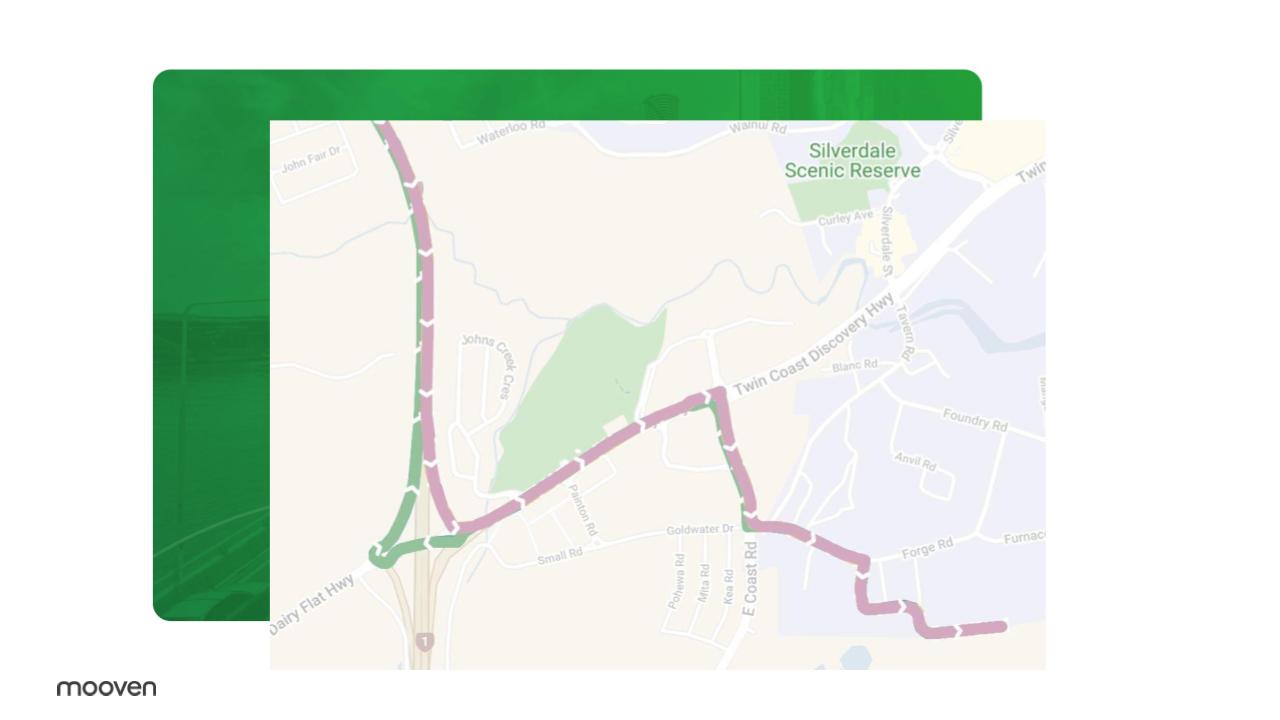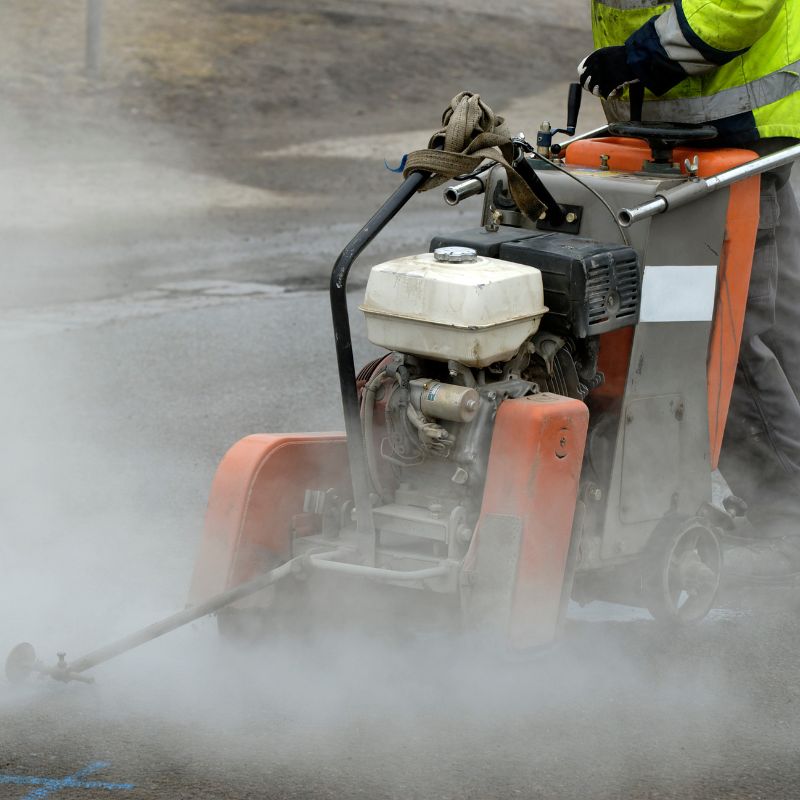
Reduced Carbon Emissions

Data-driven Insights

Site Accessibility
Mooven works with many customers who amongst many outcomes, strive to meet environmental constraints, funding criteria around environmental KPIs and the intrinsic goal of many industry organisations to reduce their footprint and operate in a more sustainable manner.
One of these organisations has been Higgins and we provide an example of a trucking transportation project below.
Higgins commissioned Mooven to monitor the key truck routes from their newly built Silverdale Asphalt Plant to multiple access points at the NX2 Project, in order to validate the return journey times and peak traffic conditions.
With this information, the team were able to identify small gains in the scheduling of each truck movement. These small gains, when applied to 100 truck movements per day, had a significant impact on the cost savings for the Higgins Team, along with more efficient movement of trucks throughout the network.

Key outcomes the team delivered when partnering with Mooven's construction technology platform were:
Reduced Carbon Emissions: By understanding the highly congested times of the day, the team were able to schedule truck movements around peak traffic to minimise the impact of over 100 trucks per day idling in the local community.
Return Journey Time Data: Higgins were able to analyse the timing of each truck movement by assessing the journey time data provided. This provided Higgins with evidence to negotiate hourly rates with third parties, saving the team an est. $200k in truck movement costs.
Accessibility to Asphalt Plant: At the entrance of the plant there were parked cars down each side of the street, narrowing the road and limiting the movement of trucks down to one lane, resulting in significant delays. The speed data collected by Mooven supported Higgin’s successful request to Council to remove on street parking for the safety of those entering and exiting their vehicles around mass truck movements.
The team successfully delivered more efficient movement of their truck network through the duration of the project, a great outcome to replicate and make repeatable gains on reducing their carbon emissions.
We’ve seen other great examples of how innovation in infrastructure delivery can offer improved holistic outcomes. For example, in Auckland, construction group Downer was expected to take 20 shifts over a five-week period to revamp a busy commercial precinct on Manukau Road. Through the use of modern technology, the team could identify smarter and longer working windows, allowing them to complete the job in six shifts.
All in all, the project reduced greenhouse emissions by 27%, and a huge part of this success was because trucks weren’t needed to run for as many days as originally expected.
Further, more uninterrupted time meant fewer breaks in the laying of asphalt, and this means longer lasting surfaces and fewer future repairs. The radically shorter delivery time also reduced the economic and environmental cost of disruption with residents spending less time in impact traffic.
These savings didn’t require a heavy investment in new equipment, they were realised by empowering existing teams with the information they needed to work smarter.
Turning environmental constraints into real-time environmental insights and outcomes
Sustainability is not just about emissions reduction. It's about taking a broader approach to understanding the social, environmental and economic impacts of any activity to achieve holistic outcomes.
Considerations about dust, noise and sediment are also vitally important to communities and the health of surrounding ecosystems.
We know that noise, dust, and other environmental restrictions can impact the delivery of projects. Concerns and rules are often subjective and complaints are hard to validate. This makes life difficult. This is why Mooven uses environmental monitoring on our platform - so that you can continuously monitor and manage community impact, validate and respond to complaints and work within your environmental constraints.

What does Environmental Monitoring capture? Continuous and real-time monitoring of variables like noise and air quality (dust) can be used for transparent reporting, proactively addressing potential issues and adjusting planned activity based on predicted weather conditions.
Baseline values can be established prior to works beginning to provide a reference point for KPI's and demonstrate your net impact.
Dust & Particulate - Track different particulate sizes, so that you can avoid dust related issues by reacting faster and implementing solutions to prevent complaints.
Noise - Understand exactly what the pre-project conditions are compared to the noise volumes you are producing from your work site.
Rain - Capture rainfall for clear, factual evidence and reporting to your key stakeholders and clients around delays that may have occurred.
How do we capture the insights? We can provide environmental sensors, using one of our partners or we can take advantage of any existing sensors on your worksite.
Solving real-world problems of carbon reduction and sustainable work practices
Reducing the footprint of the infrastructure sector is critical and public scrutiny over the ability of the sector to change has increased. According to recent analysis, infrastructure accounts for 70% of Australia’s national emissions, with 15% directly coming from the delivery and operations of that infrastructure.
Incremental change is already underway in parts of the sector, particularly energy and transport; the private sector has been proactive in reducing emissions and setting targets.
CEO of Mooven Micah Gabriels states "there’s so much room for innovation in construction, as one of the few remaining sectors that hasn’t been transformed by technology yet. For too long has the industry has experienced productivity loss, with delivery teams blind to what is really happening on the ground or forced to make compromised asset management decisions"
"Most of the decision-making, driving even multi-billion-dollar projects, has traditionally been made based on small samples of data used to infer observed behaviour. The inability to paint a true picture that understands and optimises how projects are delivered, where and when investment should occur or how to improve the useful life of existing assets has led to a huge amount of waste"
"With access to transport network data, construction outfits may find — for example — beginning roadworks even one hour earlier or finishing one hour later, each day, can shave weeks off completion time, saving time, reducing emissions, reducing the economic cost of disruption, and improving safety"

The technology for greener outcomes exists, but it’s a matter of adopting it with the intent to change the way we work. With hundreds of billions of dollars committed to transport infrastructure and construction projects, there’s a real opportunity to be innovative, to bring new ideas and ways of doing things into the future.
Read more in a recent article Mooven has published here: https://www.themandarin.com.au/198265-carbon-reduction-mandates-greener-infrastructure-practices/